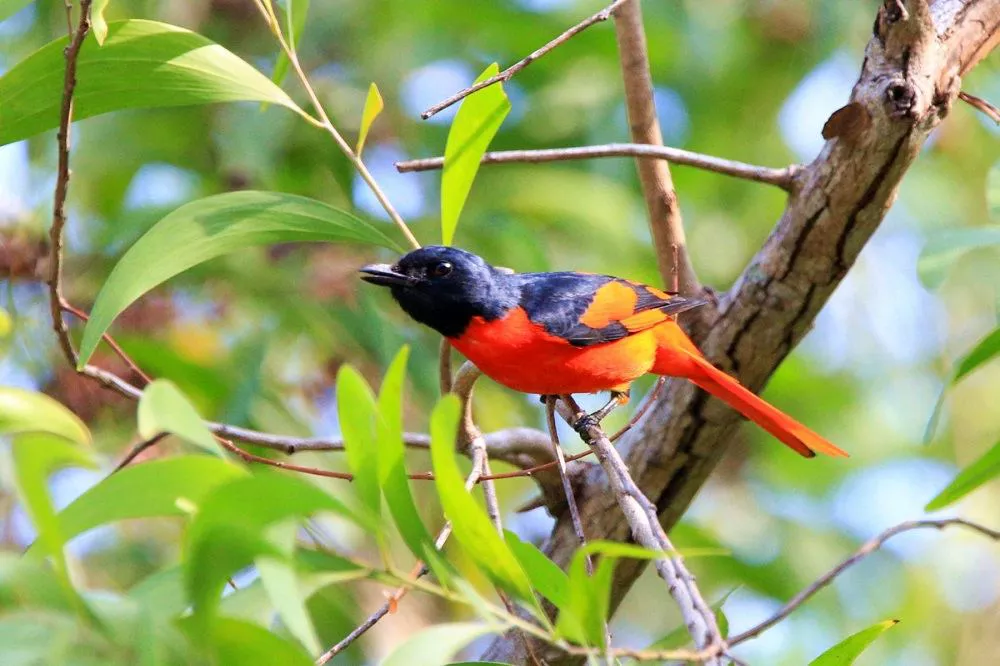The Scarlet Minivet, also known as Pericrocotus flammeus, is a small, brightly colored bird that is found in many parts of Asia. These birds are often described as striking, with their bright red and black feathers, and they are a favorite among birdwatchers and nature enthusiasts.
- Physical Characteristics
The Scarlet Minivet is a small bird, measuring approximately 18 cm in length, with a wingspan of around 25 cm. The males of the species are brightly colored, with bright red feathers on their head, wings, and tail, and black feathers on their back and belly. The females are less colorful, with greyish-brown feathers on their head and back, and yellow-orange feathers on their belly and tail.
- Habitat and Distribution
The Scarlet Minivet is found in many parts of Asia, including India, Nepal, Bhutan, Myanmar, Thailand, and Indonesia. These birds prefer to live in forests and woodlands, and they are often found in the canopy, where they feed on insects and small fruits.
- Behavior and Diet
Scarlet Minivets are typically found in pairs or small groups, and they are active birds that are often seen darting through the trees in search of food. They are primarily insectivores, but they also feed on small fruits and berries.
During the breeding season, males perform courtship displays by singing and flitting around their mate. The females build a small cup-shaped nest in a tree or shrub, where they lay 2-4 eggs. Both parents take turns incubating the eggs and feeding the chicks.
- Conservation Status
The Scarlet Minivet is classified as a species of Least Concern by the International Union for Conservation of Nature (IUCN), as it has a large range and a stable population. However, like many other bird species, it is threatened by habitat loss due to deforestation and other human activities.
In Conclusion, The Scarlet Minivet is a beautiful and fascinating bird that is found throughout Asia. Its bright red and black feathers make it a striking sight in the canopy, and its active behavior and courtship displays make it an interesting species to observe. While it is not currently considered endangered, efforts should be made to protect its habitat and ensure that it continues to thrive in the wild.


 Facebook
Facebook  Instagram
Instagram  Youtube
Youtube 